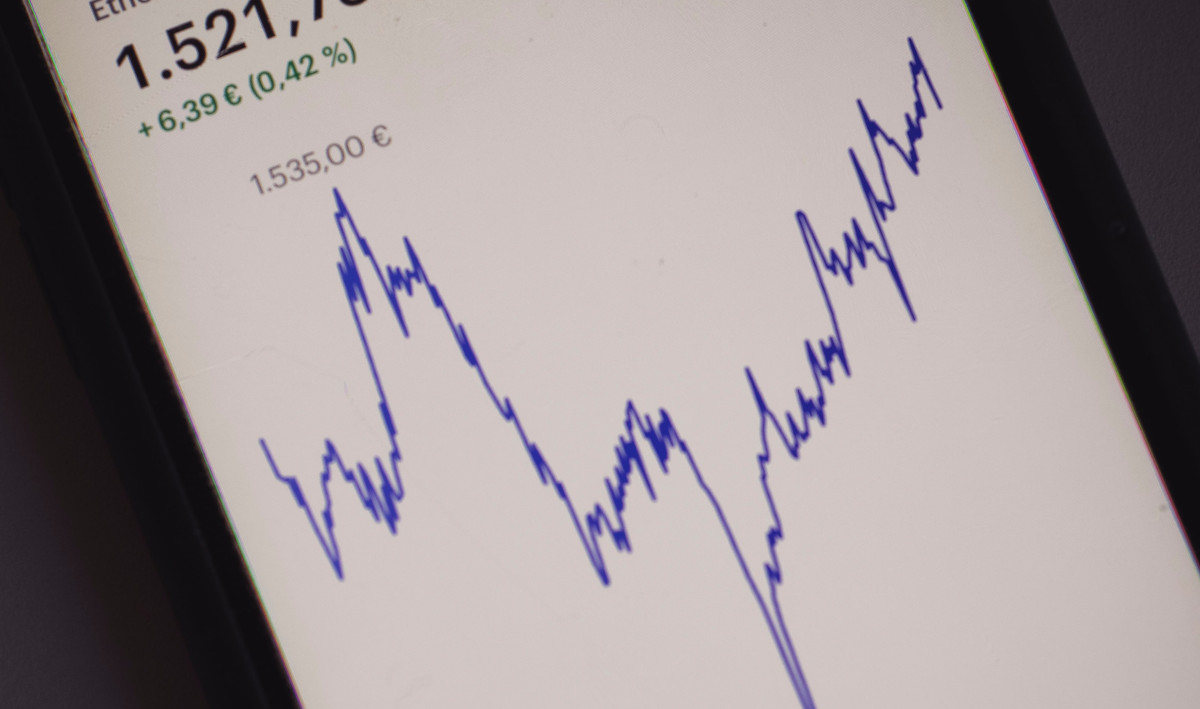Picture yourself standing at a crossroads in your investment journey, with two distinct paths stretching out before you. On one side, there’s the basic, familiar approach of dollar cost averaging. On the other, you’re presented with a more dynamic, rewarding path of market timing.
While it’s easy to stick to what you know – and what the market tends to lean towards – it’s also quite tempting to earn higher returns and lower your risk through market timing.
So, the question is, which route should you take to secure your financial future and achieve your investment goals? Which approach can help you sleep soundly at night, knowing your investments are working hard for you? And, most importantly, which method is the key to unlocking higher returns and financial success?
In just a few short moments, you’ll be presented with a clear answer based on your unique investment style and personal preferences. We’ll explore the nuances of both dollar cost averaging vs timing the market, comparing their respective strengths and weaknesses.
Our aim today is to provide clarity and guidance, enabling you to choose the investment path that aligns with your unique objectives and risk tolerance. But before we can compare and contrast market timing vs dollar cost averaging, we need to fully explain each strategy to set the stage.
What is the Difference Between Dollar Cost Averaging vs Timing the Market?
Chances are, you’re already familiar with either dollar cost averaging or market timing – but you may now fully understand both of these investment strategies.
So below, we’ll define each side of this conversation to help you get a sense of how they differ from each other. Then, we’ll look at which specific strategy meets your needs based on risk, returns, time, and other key factors.
What is Dollar Cost Averaging?
Dollar cost averaging (DCA) is a disciplined investment strategy where an investor consistently allocates a fixed amount of money to purchase assets, such as stocks or mutual funds, at regular intervals, regardless of market fluctuations.
By investing a predetermined sum at each interval, the investor acquires more shares when prices are low and fewer shares when prices are high, ultimately averaging out the cost per share over time.
This approach eliminates the need to predict or time the market and reduces the impact of short-term market volatility on the investor’s portfolio.
What is Market Timing?
Market timing, on the other hand, is a more active investment strategy that involves buying and selling financial assets based on predictions or indicators of how market trends will shift.
The primary goal of market timing is to capitalize on favorable market conditions by entering a position when asset prices are appreciating and exiting before they start to decline.
This approach requires a keen understanding of market trends, technical and fundamental analysis, and a knack for making informed decisions. Unlike dollar cost averaging, market timing focuses on exploiting short-term price fluctuations and aims to achieve superior returns by outsmarting the market.
The idea here is that you can be smarter about when you buy assets to earn higher profits and minimize your risk along the way. Think about it like this – if stock prices are at or near a resistance level and other indicators are suggesting an upcoming downturn, why would you make a purchase?
With dollar cost averaging, you’d buy the asset anyway in this situation because you’re scheduled for your routine deposit – ignoring all data suggesting an upcoming reversal. Don’t you think it’d be wiser to wait it out and sit on the sidelines with cash, and then buy in a few weeks later when prices are lower and momentum is forming back in the right direction?
Really, this is the difference between dollar cost averaging vs timing the market. And while some say you cannot time the market, that is flat-out false. You can – as long as you have the right tools in your arsenal.
More on that later. Below, we’ll compare and contrast the two strategies based on the factors that matter to you most. It’s time to figure out which strategy aligns with your unique preferences and goals as an investor.
Dollar Cost Averaging vs Timing the Market: Which is the Right Strategy For You?
Based on the two simple breakdowns above, you may already see why market timing is a more favorable strategy for the active investor who wants to make the most of their investments. Dollar-cost averaging leaves money on the table and subjects you to unnecessary downside.
With that said, we’ll provide more context in the market timing vs dollar cost averaging debate below – showing you which strategy offers better risk management, higher profit potential, less time & effort, and other important considerations.
Then, we’ll give you our opinion on which specific strategy we recommend for you: dollar cost averaging vs timing the market.
Risk Management
When it comes to risk management, market timing has a significant advantage over dollar cost averaging. Dollar cost averaging exposes investors to unnecessary downside risk, as it involves investing fixed amounts regularly without considering market conditions.
This means you might continue to make investments during periods of poor economic performance or market declines, increasing your overall risk exposure.
Market timing, on the other hand, is a more strategic approach to managing risk. By carefully analyzing market trends and economic indicators, investors can make informed decisions on when to enter or exit positions, thereby avoiding significant declines in asset prices.
Plus, with the right tools and guidance, market timing can help you manage risk more effectively, mitigating downside risk and protecting your portfolio from severe market downturns.
By utilizing market timing, you can better control your risk exposure and protect your investments in various market conditions.
Later in this article, we’ll discuss how leveraging an effective market timing tool can make all the difference in your investment strategy. We also have an article on options risk management specifically if you’d like to learn more. For now, let’s talk profits…
Returns and Profitability
Even the most conservative investors recognize the importance of developing a strategy centered on returns and profitability. And while some consider dollar cost averaging to offer more consistent returns over time, it is not a strategy that maximizes your profit potential.
This is partially because of what we just discussed above. Because you’re investing during down periods, regular losses will eat away at the profits you do earn – which will be lower in their own right than timing the market.
Market timing, on the other hand, has the potential to generate higher returns by capitalizing on short-term price movements. When you buy in at more attractive price points and convert your positions to cash during unfavorable economic periods, you’ll obviously earn much more profitable trading!
Now, the key is in consistently timing the market. If you don’t have a system that works consistently, you will take losses. And, frankly, even the best system will fall short sometimes. The key is remaining emotionless and following your system, cutting losses when necessary. If you do this, the profits will dramatically outweigh the occasional losses.
In a few moments, we’ll talk more about utilizing a proven system like VectorVest to harness market timing. It can help you consistently outperform the market and potentially achieve greater profitability than dollar cost averaging. First, let’s talk about the time and effort involved in dollar cost averaging vs timing the market.
Time and Effort
Dollar cost averaging generally requires less time and effort, as it involves making regular, fixed investments regardless of market conditions. At a certain point, the process can be automated and you don’t even have to think about it.
On the other hand, market timing requires you to be more active. Not only does it require you to consistently look for new opportunities in the stock market, but you have to manage your existing positions as well. For this reason, it’s generally agreed upon that market timing requires more time and effort.
But, what you put into your strategy is generally what you get out. If you’re basing your decision solely on what takes the least amount of work and effort, you’ll have to compromise on risk management and returns.
And, frankly, the days of having to track complex technical indicators like moving averages are long gone. With a system like VectorVest, you can free yourself from the shackles of constant technical & fundamental analysis, saving time and effort while enjoying higher, more consistent, returns.
We’ll come back to this topic after we highlight a few other considerations – like emotional discipline.
Emotional Discipline
Dollar cost averaging removes some of the emotional aspects of investing by sticking to a consistent investment plan. You can essentially unplug your brain from any sort of investing decisions – just follow your investment schedule.
Market timing, on the other hand, can be more emotionally challenging, as it requires investors to make decisions based on their analysis of market trends. It’s all too easy to get wrapped up in an opportunity and get stuck holding the bag at the end after a stock tanks.
However, with proper guidance and a disciplined approach, market timing can be a more emotionally rewarding strategy, as investors can feel more in control of their investments. In fact, you can systemize this style of investing as well and remove your human emotions from any sort of decision-making.
With VectorVest, you’re given a clear buy, sell, or hold recommendation based on market timing and other key factors. Follow those recommendations and win more trades – it’s that simple.
Performance in Different Markets
While dollar cost averaging can provide consistent returns in steadily rising markets, its performance can be negatively impacted in volatile or declining markets. Meanwhile, market timing has the potential to deliver strong returns in any market conditions by strategically adjusting investment decisions based on market trends and indicators.
Suitability for Different Types of Investors
At a certain point, it’s less about crowning dollar cost averaging or market timing the overarching king – and more about finding which strategy aligns with you specifically as an investor.
Dollar cost averaging is often considered more suitable for novice investors, as it requires less knowledge and experience to implement. Market timing, however, may be more appropriate for experienced investors who have a deeper understanding of market trends and the ability to analyze and interpret market data.
But, as you’ve noticed throughout this section, the right resources and tools can negate any reasoning to choose dollar cost averaging over market timing. And with that said, it’s time we provide you with a clear verdict – in case you aren’t already convinced one way or the other…
So, Is Dollar Cost Averaging Better Than Timing the Market or Vice Versa?
We’ve laid it all on the line for you – and it’s time to make a decision. So, which is better, market timing vs dollar cost averaging? If it wasn’t obvious, we believe market timing is the superior strategy – and there are a multitude of reasons for this.
Not only does it protect your portfolio from a poor economic cycle – but your potential for profits is much higher.
While dollar cost averaging can return steady, consistent returns, we have a feeling you aren’t looking to settle for the bare minimum. You want more for yourself. And, you can have it – with market timing.
While market timing generally takes a bit more time and effort, much of the work can be automated through a solution like VectorVest. We’ll talk about using VectorVest as part of your investment strategy shortly. First, let’s ponder the possibility of using dollar cost averaging and market timing together.
Is it Possible to Use Both Dollar Cost Averaging and Market Timing Together?
If you wanted to combine both dollar cost averaging and market timing strategies in your investment approach, you could – but frankly, we don’t see much reason to bother with dollar cost averaging. Like we’ve said throughout this conversation – you sell yourself short as an investor when you invest without any data or analysis supporting each trade.
With that said, you could implement dollar cost averaging for your core investments while allocating a portion of your portfolio for market timing strategies. This combination can help balance the benefits and drawbacks of each approach, providing a more well-rounded investment strategy.
However, when you see just how simple VectorVest makes timing the market, you’ll be convinced that it’s the right approach for you…
Whether You Choose Market Timing vs Dollar Cost Averaging, Set Yourself Up For Success With This Software…
Regardless of whether you decide to try dollar cost averaging vs market timing, it’s important to arm yourself with the tools for successful trading.
VectorVest is a stock analysis software that has outperformed the S&P 500 for more than 22 years. And, it can help you do the same. It’ll benefit you if you’re dollar cost averaging, but especially if you’re looking to time the market.
The entire system relies on an intuitive, proprietary stock-rating system. You’re given clear, actionable insights with just three simple ratings, each of which sits on a scale of 0.00-2.00.
One of these is relative timing (RT) – which, as you may have guessed, is a profound indicator in helping you find the right time to buy and sell.
Stocks with RT ratings appreciating above the average of 1.00 indicate a strong, positive price trend pushing in the right direction. As that RT rating declines and looks to be heading below the average of 1.00, it’s your sign that the trend has weakened and it’s time to get out.
But, VectorVest makes timing your entry and exit even simpler with a clear buy, sell, or hold recommendation for any given stock at any given time. And with our add-on feature ProfitLockerPro, you can automate your trades even further.
And, taking this a step further, you can reap the benefits of this system where you’re hoping to make money swing trading or you’re trying to figure out where to put your investment after retirement. VectorVest can accommodate any strategy, and help you accomplish any goals you may have along the way. We encourage you to see it in action yourself with a free stock analysis today.
Bringing Our Conversation on Market Timing vs Dollar Cost Averaging to a Close
We hope this conversation on market timing vs dollar cost averaging provided you with complete clarity as to which strategy best suits you as an investor. While they both have their advantages and shortcomings, one stands alone as a better strategy overall – and that is market timing.
In summary, market timing helps you protect your portfolio and earn higher profits. While it takes more work and emotional resilience, it’s worth the effort. And with the help of VectorVest, the answer between dollar cost averaging vs timing the market is a no-brainer!







Leave A Comment